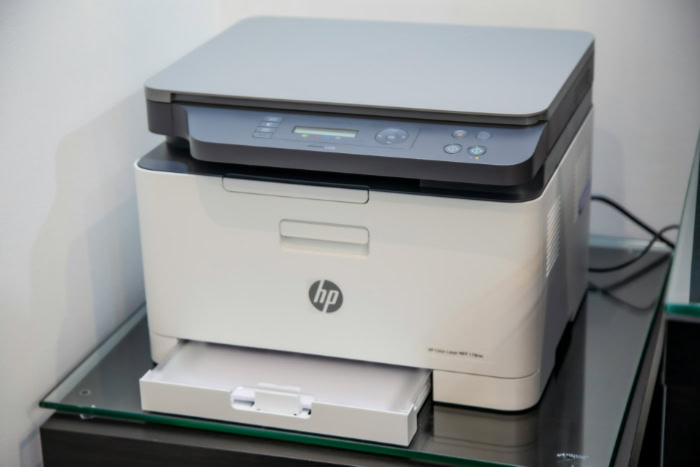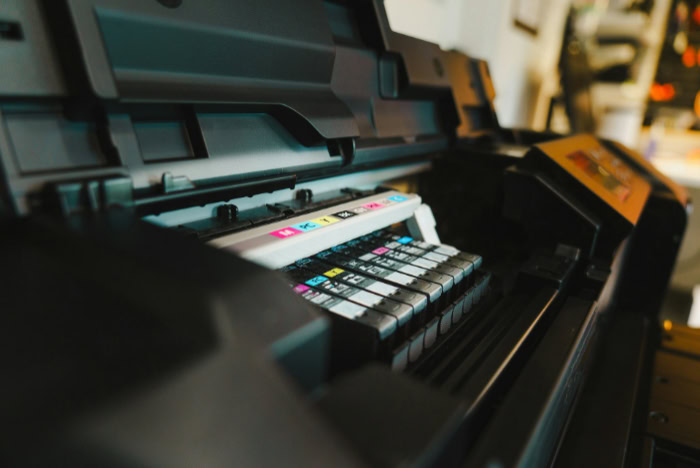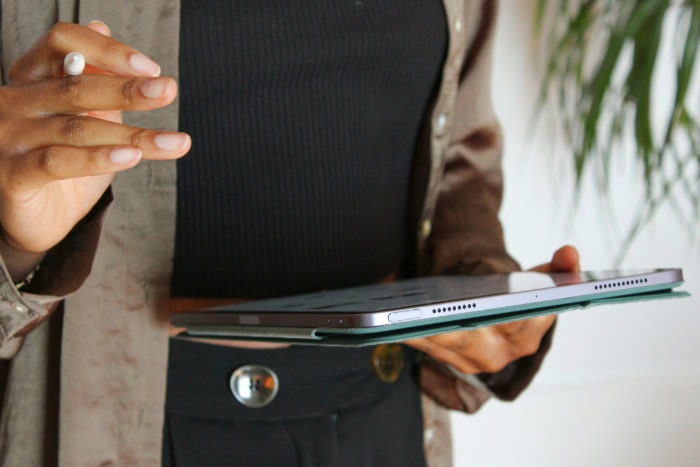How Do Printers Work? From Digital to Paper

Printers sit quietly in the corner of almost every office and home study, often ignored until the moment they run out of ink or jam. Despite their ubiquitous presence, the machinery inside these plastic boxes remains a mystery to most users.
While the final result is always a piece of paper with text or images, the internal struggle to produce that page varies wildly depending on the machine on your desk.
The Core Technologies
Printers generally rely on one of two distinct engineering approaches to transfer digital images onto physical media. While the final document might look similar regardless of the machine used, the internal machinery operates on completely different scientific principles.
One method utilizes liquid chemistry and precision spraying, while the other harnesses the power of static electricity and heat.
Inkjet Technology Mechanics
Inkjet printers create images by propelling microscopic droplets of liquid ink directly onto paper. A printhead scans back and forth across the page while hundreds of tiny nozzles fire thousands of times per second.
Manufacturers typically employ one of two methods to eject these droplets with necessary precision. Thermal bubble technology uses heat to vaporize a small amount of ink within a chamber.
The resulting vapor bubble expands rapidly, forcing ink through the nozzle and onto the page.
Piezoelectric technology serves as the primary alternative to thermal methods. This approach utilizes specialized crystals that change shape when an electric current flows through them.
The physical deformation of the crystal acts like a pump, mechanically pushing the ink out of the nozzle. Both methods allow the printer to mix cyan, magenta, yellow, and black inks with incredible accuracy. Because the ink remains liquid until it hits the paper, it can blend smoothly to create subtle color gradients.
Laser Technology Processes
Laser printing abandons liquid ink in favor of a fine, dry powder known as toner. The process relies heavily on electrostatics and begins with a cylindrical drum coated in a photosensitive material.
A primary charge roller applies a uniform negative electrostatic charge to the entire surface of the drum. A laser beam then rapidly traces the text or image onto the spinning drum.
Wherever the light strikes the surface, the electrical charge reverses or neutralizes, creating an invisible electrostatic template of the document.
Positively charged toner particles are then released near the drum. These particles adhere only to the areas discharged by the laser, effectively revealing the image.
As paper passes through the machine, it receives a strong electrical charge opposite to that of the toner, which pulls the powder off the drum and onto the sheet. The final step involves the fuser unit.
The paper passes between heated rollers that melt the plastic toner particles, permanently bonding the text or image into the paper fibers.
Distinction In Output And Performance
The choice between these technologies often comes down to the specific requirements for image quality versus text clarity. Inkjet machines generally produce superior results for photographs and image-heavy graphic design work.
The ability to mix liquid colors on the paper surface allows for vibrant hues and smooth transitions that dry powder cannot easily replicate. Liquid ink is the standard for gallery-quality photo printing and art reproduction.
Laser printers dominate when speed and text sharpness are the primary concerns. Because the laser can draw an entire page image quickly and the fuser bonds it instantly, these machines can produce pages at a much higher rate than their inkjet counterparts.
The dry nature of toner also means the text is crisp, precise, and resistant to smudging or water damage immediately after printing. Offices handling high volumes of black-and-white documents almost exclusively rely on laser technology for its efficiency and legibility.
Multifunction Printers: Beyond Just Printing

Modern offices rarely tolerate single-purpose devices that clutter desks and consume valuable floor space. The solution has been the widespread adoption of the multifunction printer (MFP), a device that consolidates output, input, and transmission capabilities into a single unit.
These machines serve as central hubs for document management, capable of digitizing physical records just as easily as they produce hard copies.
Scanning And Copying Mechanics
The primary distinction of an MFP lies in its ability to “read” a document using advanced optical sensors. This process typically relies on one of two technologies to capture the image.
Charge-Coupled Devices (CCD) represent the traditional, high-fidelity method often found in larger office machines. In a CCD system, a bright lamp illuminates the document while a system of mirrors and lenses directs the reflected light onto a sensor array.
This method offers excellent depth of field, allowing users to scan thick books or even textured objects with high clarity.
Contact Image Sensors (CIS) offer a more compact alternative frequently seen in consumer models. Instead of complex optical paths with mirrors, CIS units place the sensor element directly beneath the glass surface, illuminated by red, green, and blue LEDs.
This design requires significantly less power and space, allowing for thinner scanner lids and lighter machines. Once the light hits the sensor, regardless of if it is CCD or CIS, the machine converts the varying light intensities into electrical signals.
These signals are then processed into digital data that a computer can display as an image or the printer can immediately reproduce as a physical copy.
Faxing Capabilities And Connectivity
While internet communication dominates modern business, faxing remains a requirement for many legal and medical industries due to security compliance standards. MFPs integrate a modem capable of translating digital document data into audio tones that travel over standard telephone lines.
The receiving machine decodes these audio signals back into a printable image. This capability requires the MFP to interface directly with telecommunication networks, bridging the gap between digital processing and analog transmission.
Beyond legacy faxing, modern connectivity allows these devices to act as autonomous network nodes. Through complex internal firmware, an MFP can route scanned data directly to an email address, a specific network folder, or a cloud storage service without needing a computer to act as an intermediary.
The machine utilizes standard network protocols to authenticate users and transfer files securely, effectively acting as a standalone computer specialized for document traffic.
Integrated Mechanical Design
The engineering challenge of an MFP involves fitting these distinct systems into a unified chassis that saves space and energy. Designers stack components vertically, usually placing the flatbed scanner assembly directly above the printing engine.
This configuration shares the power supply and main processing board between all functions, which reduces the total electrical load compared to running separate scanners, copiers, and fax machines.
Switching between tasks requires seamless internal logic. When a user selects “Copy,” the device creates an internal loop where data moves from the scanner directly to the printer memory buffer, bypassing external connections entirely.
This internal shortcut speeds up the process significantly. The mechanical integration extends to the control panel, which serves as the command center for switching modes, troubleshooting jams, and configuring network settings for all subsystems simultaneously.
Paper Handling And Mechanics
While the application of ink or toner attracts the most attention, the mechanical process of transporting paper is equally sophisticated and critical to the final result. A printer essentially functions as a high-precision conveyor system that must manipulate flexible, fragile materials at high speeds.
The internal architecture consists of a complex array of motors, gears, and sensors designed to guide a single sheet from a stationary stack, through the imaging zone, and out to the tray without wrinkling, tearing, or jamming.
Feed Mechanisms And Precision Movement
The journey of a printed page begins at the paper tray, where a specialized component known as the pick-up roller initiates the cycle. This roller is covered in a high-friction rubber material that grips the top sheet of the stack.
As the roller rotates, it slides the paper forward into the machine. To prevent multiple sheets from entering simultaneously, a separation pad or a counter-rotating reverse roller applies friction to the sheets underneath, holding them back while only the top page advances.
Once the paper enters the main path, a series of feed rollers takes over control. These rollers are driven by stepper motors, which can rotate in precise increments to control the paper's position down to the millimeter.
Optical sensors located along the path detect the leading edge of the paper, signaling the print engine to begin depositing ink or toner at the exact moment the page arrives. The coordination between the moving paper and the print mechanism must be flawless; even a momentary slip in the rollers can result in distorted text or misaligned images.
Mechanical Process Of Duplex Printing
Automatic double-sided printing, technically known as duplexing, requires a specific mechanical routine to flip the physical sheet of paper. The process starts normally, with the machine printing the first side of the document.
Instead of ejecting the page completely into the output tray, the printer halts the rollers just as the trailing edge of the paper becomes visible.
The rollers then reverse direction, pulling the sheet back into the machine. However, the paper does not return to the original paper path.
A mechanical gate, known as a diverter, swings into position to route the returning paper into a separate duplex unit. This internal loop creates a switchback effect, physically inverting the paper before feeding it back to the start of the printing zone. The machine then prints on the blank reverse side, and the page is finally ejected.
This complex loop increases the travel distance of the paper, which explains why double-sided printing typically takes longer than single-sided jobs.
Adjusting For Media Versatility
Printers must accommodate a wide variety of materials beyond standard office copy paper, requiring the internal mechanics to adapt to different thicknesses and surface textures. When a user selects a heavier media type like cardstock or an envelope, the printer often adjusts the pressure applied by the feed rollers.
Too much pressure can crush an envelope or leave track marks on fine art paper, while too little pressure leads to slipping and paper jams.
Thickness adjustments often involve changing the platen gap, which is the physical distance between the printhead and the paper surface. If a thick sheet of cardstock passes through a gap set for thin paper, the printhead might scrape against the surface, ruining the print and potentially damaging the nozzle.
Conversely, printing on thin paper with a wide gap can cause ink droplets to drift, resulting in blurry images. Advanced printers automatically detect the media type or adjust this gap based on driver settings to ensure the printhead remains at the optimal distance for sharp, accurate deposition.
Connectivity And Data Processing

Before a mechanical arm moves or a laser fires, a significant amount of invisible work occurs in the digital domain. A printer is effectively a specialized computer that must converse with phones, laptops, and tablets to interpret what needs to be produced.
The gap between the image on a screen and the dots on a page is bridged by complex software translation and robust communication protocols.
The Role Of The Print Driver
The communication between a computer and a printer relies on a piece of intermediary software known as a driver. Operating systems like Windows or macOS display documents using vector graphics or pixels, but printers require specific instructions on where to place dots of ink or toner.
The print driver acts as a translator, converting the computer's display data into a specialized Page Description Language (PDL).
Common languages include PostScript, widely used in professional graphic design for its precision, and Printer Command Language (PCL), which is standard for general office tasks. The driver takes the text, images, and formatting from the user's screen and rewrites them into a stream of commands that tell the printer exactly how to control its motors and printheads.
Without this translation, the printer would receive a meaningless jumble of data rather than a structured set of instructions.
Wireless Protocols And Mobile Access
Modern printing has largely abandoned the USB cable in favor of flexible wireless connections. Technologies like Wi-Fi Direct allow a device to connect straight to the printer without needing a router or an existing internet connection.
This creates a peer-to-peer link, enabling guests to print documents securely without gaining access to the main office network.
Cloud printing services expand this capability further by routing print jobs through internet servers. A user can send a document from a coffee shop to a printer located in an office miles away.
Mobile-specific protocols such as Apple AirPrint and the Mopria Alliance standards for Android have standardized these interactions. These protocols allow mobile devices to automatically detect compatible printers on a local network and submit jobs without the need for the user to manually install specific drivers or configure complex settings.
Internal Memory And Processing Power
Once the data reaches the printer, the device must store and organize it before printing begins. Every printer contains its own internal processor and Random Access Memory (RAM), functioning much like a scaled-down computer.
When a large file, such as a high-resolution photograph or a hundred-page report, is sent to the printer, the computer transfers the data to the printer's memory buffer.
This buffering process frees up the computer to perform other tasks immediately, rather than forcing the user to wait until the printing is finished. The printer's internal processor then takes over, interpreting the PDL commands and managing the rasterization process, which maps out the millions of dots required for the final image.
Printers designed for heavy graphic use or busy workgroups typically feature expandable RAM slots and faster processors to handle complex queues without stalling or crashing.
Specialized Features For Modern Needs
As user requirements have shifted toward higher efficiency and convenience, printer manufacturers have introduced specialized components to address specific pain points like cost, speed, and reliability. Modern devices are no longer just simple output machines; they incorporate clever engineering solutions designed to handle high-volume workloads and self-regulate their own performance.
Ink Tank Systems
For decades, the standard model for inkjet printing involved small, expensive cartridges that required frequent replacement. The industry has recently moved toward continuous ink supply systems, commonly known as supertank or ink tank printers.
These devices replace the disposable cartridge model with large, refillable reservoirs integrated directly into the printer's body. Users simply purchase bottles of liquid ink and pour them into the corresponding color tanks.
The mechanical advantage here is volume. A single bottle often contains enough ink to print thousands of pages, compared to the few hundred pages a traditional cartridge might yield.
The internal tubing system draws ink from these large reservoirs and delivers it to the printhead as needed, maintaining constant pressure and supply. This design significantly lowers the cost per page and reduces plastic waste, making color printing economically viable for students and home offices that previously rationed their usage.
Automatic Document Feeders
Scanning or copying a multi-page contract one sheet at a time is a tedious, manual process. The Automatic Document Feeder (ADF) solves this by automating the paper handling for input tasks.
Located on top of the scanner lid, the ADF uses its own set of rollers and sensors to pull a stack of original documents through the machine sequentially.
When a user places a stack of papers into the ADF tray, the mechanism grabs the top sheet, passes it over a stationary scanning element, and ejects it into a separate output tray. Advanced ADFs offer single-pass duplex scanning, which employs two separate scan bars to read both the front and back of a page simultaneously as it passes through.
This capability doubles the scanning speed for two-sided documents and eliminates the mechanical complexity of flipping the paper over inside the scanner.
Automated Maintenance Technologies
To maintain print quality over the machine's lifespan, printers rely on internal maintenance routines that often run without the user's knowledge. Inkjet printheads are susceptible to clogging if the ink dries inside the microscopic nozzles.
To prevent this, the printer periodically performs a cleaning cycle where it flushes a small amount of fresh ink through the nozzles to clear out any dried residue or air bubbles.
Laser printers perform their own calibration routines, often adjusting the density of the toner and the alignment of the color layers (registration) to ensure images remain sharp. Furthermore, many devices include automated head alignment features.
By printing a test pattern and reading it with an internal sensor, the printer can detect if the printhead has shifted slightly and electronically adjust the firing timing to correct the alignment. These self-regulating systems ensure that the thousandth print looks as good as the first without requiring manual intervention.
Conclusion
Selecting the right printing equipment requires recognizing that distinct technologies serve unique purposes. Inkjet mechanisms utilize precise liquid spraying to achieve the color depth necessary for photography, whereas laser systems employ heat and static to produce the sharp, durable text required for professional documents.
Multifunction printers further expand this utility by integrating sensors and software to manage the flow of information in both directions, effectively consolidating an entire office's document management needs into a single chassis.
Grasping the internal operations of these devices offers more than just technical insight; it provides the context needed to troubleshoot errors effectively. Knowing how feed rollers operate or how drivers interpret data transforms a frustrating error message into a solvable mechanical issue.
Furthermore, this technical awareness prevents buyers from being swayed by initial price tags alone, allowing them to calculate long-term costs based on maintenance requirements and consumable yields that match their actual usage.
These devices have graduated from simple output tools to become sophisticated office hubs. With the ability to buffer complex data, connect independently to the cloud, and automate their own maintenance, modern printers stand as intelligent participants in the digital workflow.
As technology continues to advance, the printer remains a vital link between the virtual workspace and the physical world, executing complex engineering feats quietly in the background.


